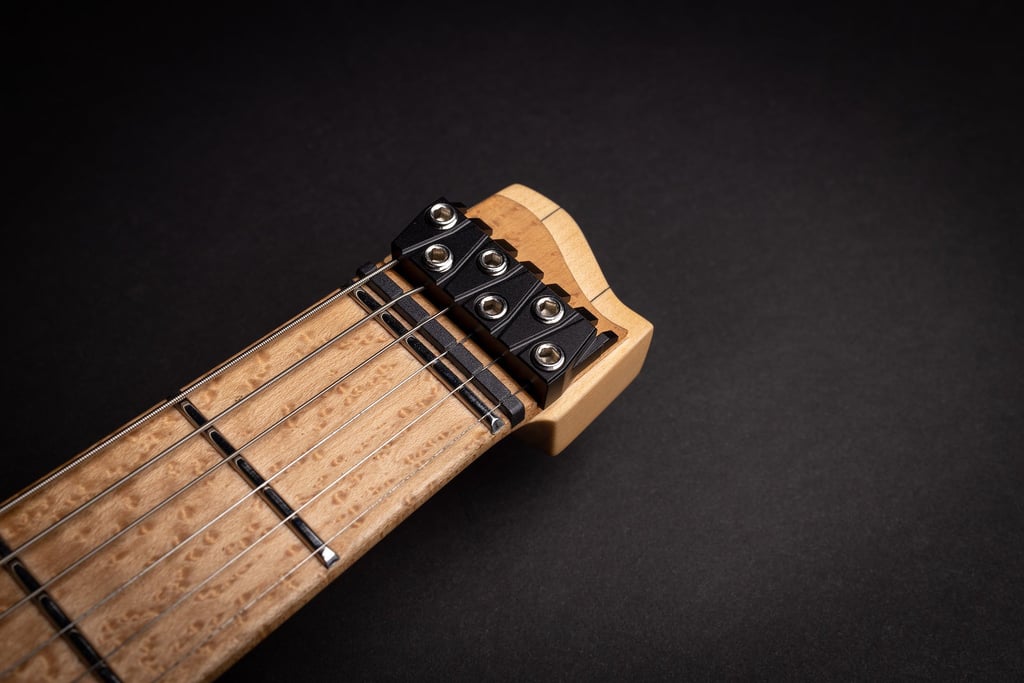Fret sprout – what it is, how you detect and how you avoid
Welcome to our guide on understanding and addressing a common yet often misunderstood issue that affects guitarists of all levels: fret sprout. Whether you’re a seasoned player noticing something off with your instrument or a newcomer curious about maintaining your guitar in top condition, this guide is for you.
Here’s what we’ll cover:
- Fret Sprout – What Is It? / How Do They Happen?
- How Do You Detect Fret Sprout? / Easy to Detect
- “Help! I’ve Got Fret Sprout! How Do I Fix Them?”
- Easy Ways to Avoid Fret Sprout
Fret Sprout – What Is It? / How Do They Happen?
Fret sprout occurs when the wood of a guitar’s neck contracts, often due to a drop in humidity, causing the metal frets to extend slightly beyond the neck’s edge. It’s similar to a tree shedding leaves, except it’s your guitar reacting to its surroundings.
The contrast in material behavior between the wood and the metal frets under different temperature and humidity conditions is the root of this phenomenon. When the air gets dry, wood responds by contracting, leaving the once-flush frets feeling like tiny, unwelcome thorns along the edge of the neck.

How Do You Detect Fret Sprout? / Easy to Detect
Detecting fret sprout is usually straightforward. Run your hand gently along the edge of the guitar’s neck. If you feel any sharpness or notice the fret ends protruding, you’ve encountered fret sprout. Visually, it might be less apparent, but your fingers will definitely catch on the slight metal overhang.
It’s a common phenomenon, especially in areas with significant seasonal humidity changes, and can affect playability and the comfort of your playing experience.
“Help! I’ve Got Fret Sprouts! How Do I Fix Them?”
If you find yourself grappling with fret sprout, don’t fret (pun intended). The fix usually involves gently filing down the protruding fret ends and then polishing them to restore a smooth neck surface.
This process, while not overly complex, requires a careful hand and the right tools—fret files, fine-grit sandpaper, and polishing cloths are essentials.
For those who are not comfortable doing this themselves, a professional luthier or guitar technician can perform the repair.
Costs for such repairs vary. We encourage you to check with your local guitar shop of they can help you.
Easy Ways to Avoid Fret Sprout
There are 4 main things you could do to avoid or at least reduce the risk of fret sprout.
- Maintain stable humidity levels
- Invest in a guitar humidifier
- Condition the fretboard regularly
- Store your guitar in a case
Maintaining stable humidity levels for your guitar’s storage environment can significantly reduce the risk. A guitar humidifier could be a great investment, particularly if you live in a region prone to dry winters.
Regularly conditioning your fretboard can also help maintain the wood’s natural moisture balance. If your fretboard is made of Rosewood, or any other type of wood that does not have a finish, we recommend using “fretboard oil” to condition the wood.
Fretboards made of Maple have a protective finish and should not be oiled. Richlite or other composite materials should also not be oiled.
Finally, storing your guitar in its case when not in use protects it from rapid changes in environmental conditions, keeping those frets in line and your playing smooth.
However, it is the humidity that is absolutely crucial, and if the wood has shrunk, no oil in the world will make it swell back again.
We hope found this guide useful and that you’ve collected enough knowledge to avoid or reduce fret sprout on your guitar.
If you have other questions about guitar maintenance, check out our support documentation.














Share this: